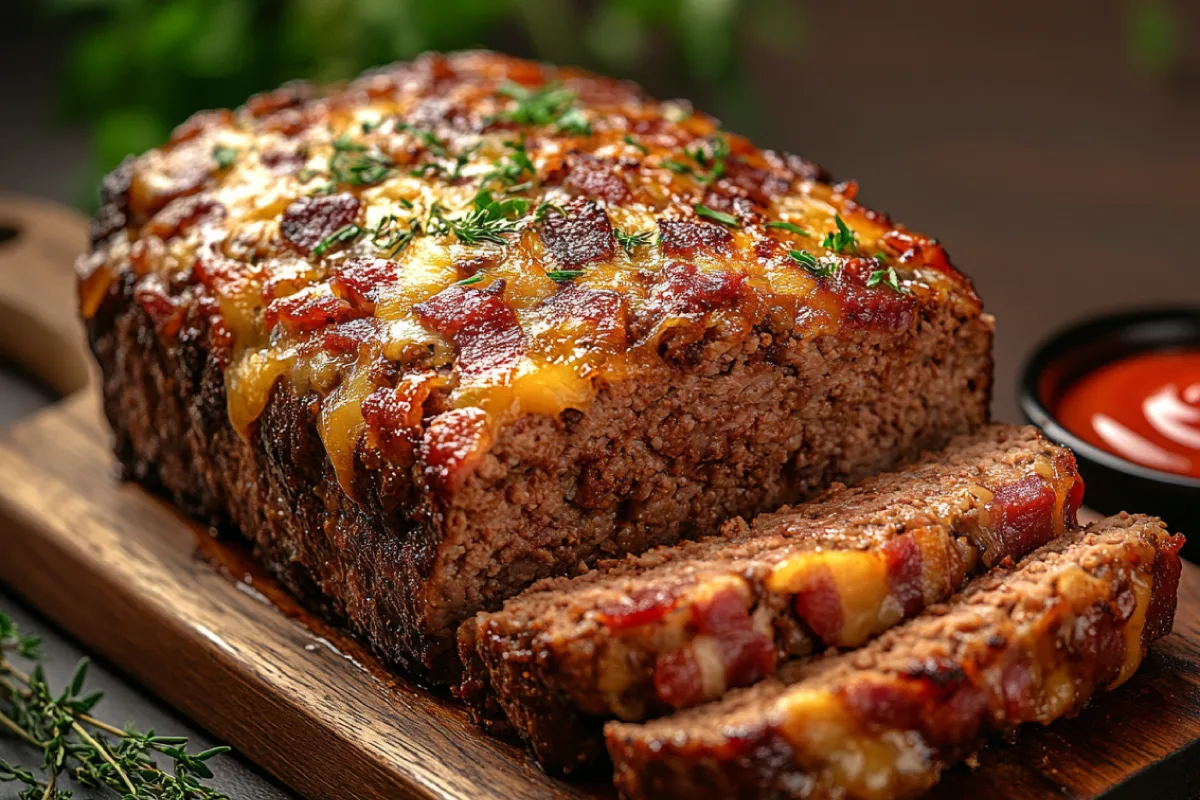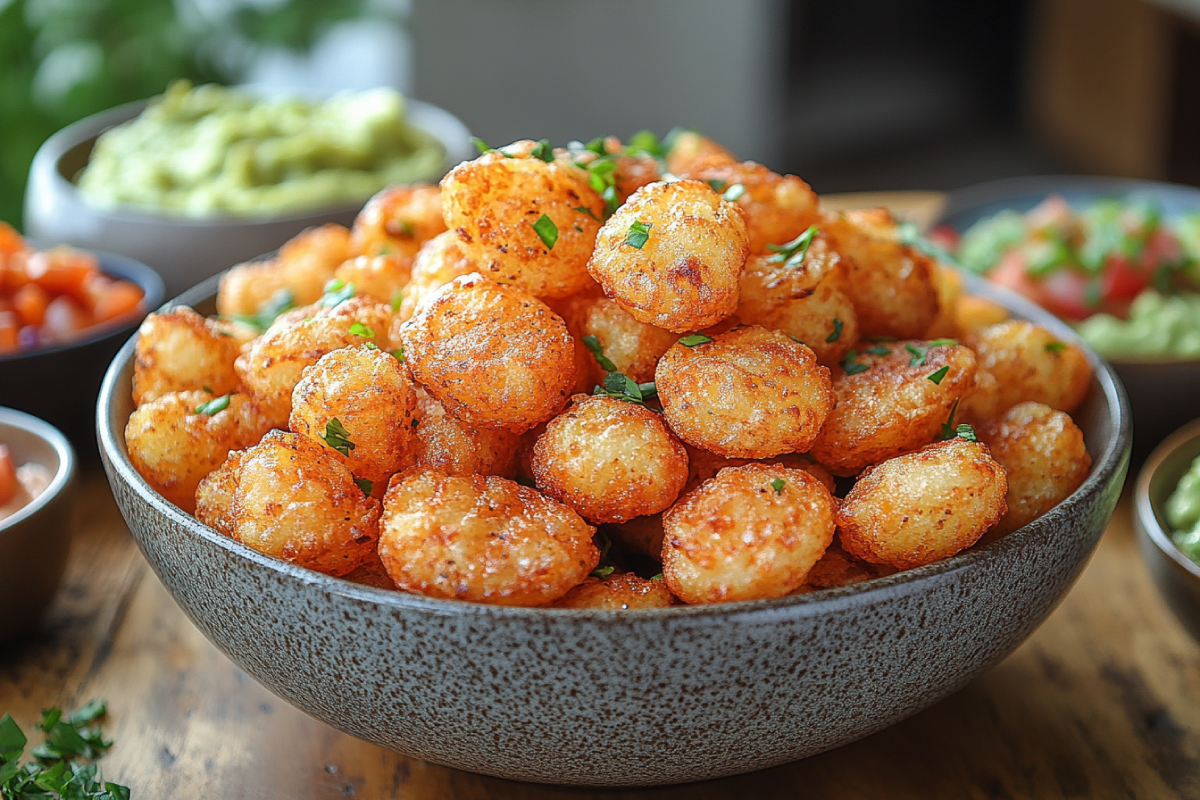Cheese crisps have become a popular snack for health-conscious individuals seeking a crunchy, flavorful treat. But are cheese crisps a good snack? Packed with protein, low in carbohydrates, and naturally gluten-free, these crispy delights cater to various dietary needs. In this article, we’ll explore their nutritional benefits, potential downsides, and creative ways to enjoy them, helping you decide if they deserve a spot in your snack rotation.
What Are Cheese Crisps?
Cheese crisps are a simple yet innovative snack made entirely of baked or fried cheese. As the cheese cooks, its moisture evaporates, leaving behind a crispy, crunchy texture with an intense cheese flavor. These snacks have become particularly popular in recent years, thanks to the rising demand for low-carb and gluten-free options.
Explore More: Learn about other creative snacks like The Ultimate Guide to Cheese Crisps and their variations.
Definition of Cheese Crisps
At their core, cheese crisps are thin, crispy wafers made from cheese. They can be made from a single type of cheese, like cheddar, parmesan, or gouda, or a blend of cheeses to achieve a balance of flavor and texture. Unlike traditional snacks like chips or crackers, cheese crisps are made without grains or additives, making them a standout choice for those seeking a more natural option.
How Cheese Crisps Are Made
Cheese crisps are typically made by baking or frying slices or shredded cheese until they become crispy. The process is simple:
- Shredded Cheese: Start with shredded or thinly sliced cheese.
- Baking or Frying: Bake the cheese in an oven at moderate heat or fry it in a pan until golden brown.
- Cooling: Let the crisps cool to harden and achieve their signature crunch.
Store-bought cheese crisps often undergo a similar process but may include added seasonings, herbs, or spices to enhance the flavor profile.
Varieties of Cheese Crisps
Cheese crisps come in many varieties, catering to different taste preferences and dietary needs:
- Classic Cheese Crisps: Made from aged cheeses like parmesan or cheddar for a sharp, robust flavor.
- Flavored Cheese Crisps: Include herbs, spices, or even additional ingredients like garlic, jalapeño, or truffle.
- Vegetarian and Vegan Alternatives: Some brands offer plant-based cheese crisps made with alternative ingredients for those avoiding dairy.
Cheese crisps are versatile and can be enjoyed on their own or as a complement to other dishes. Their combination of simplicity and gourmet appeal makes them a favorite among snack enthusiasts.

Nutritional Benefits
Cheese crisps aren’t just a delicious treat—they also offer a range of nutritional advantages that make them stand out from traditional snack options. Packed with protein, low in carbohydrates, and brimming with essential nutrients, they appeal to those looking for a healthier alternative to chips or crackers. Let’s dive into the key benefits.
High Protein Content
One of the most significant nutritional perks of cheese crisps is their high protein content. Since they’re made entirely of cheese, they deliver the protein naturally present in dairy. A single serving of cheese crisps can contain up to 10 grams of protein, depending on the type of cheese used.
- Benefits of Protein: Protein is crucial for muscle repair, maintaining a healthy metabolism, and keeping you feeling full longer, making cheese crisps an excellent option for curbing hunger between meals.
- Comparison to Other Snacks: Cheese crisps generally contain more protein per serving than chips or crackers, providing sustained energy without the carb crash.
Low in Carbohydrates
Cheese crisps are a top choice for those following low-carb or keto diets. Since they contain no grains or added sugars, their carbohydrate content is virtually zero. This makes them ideal for anyone looking to reduce their carb intake without sacrificing flavor.
- Keto-Friendly: Cheese crisps align perfectly with the macronutrient balance required for ketosis.
- Blood Sugar Stability: The lack of carbs helps prevent blood sugar spikes, making cheese crisps suitable for individuals managing diabetes or insulin resistance.
Packed with Essential Vitamins and Minerals
Cheese is a natural source of several key vitamins and minerals, many of which are retained in cheese crisps. Some of the notable nutrients include:
- Calcium: Essential for bone health, muscle function, and nerve signaling.
- Phosphorus: Works alongside calcium to support strong bones and teeth.
- Vitamin B12: Important for energy production and maintaining a healthy nervous system.
- Zinc: Plays a role in immune function and cell repair.
Naturally Gluten-Free
Because cheese crisps are made entirely of cheese, they are naturally gluten-free. This makes them an excellent snack choice for individuals with celiac disease or gluten sensitivity. Unlike many gluten-free products, cheese crisps require no substitutions or fillers, ensuring a pure and simple snacking experience.
Great Source of Healthy Fats
While cheese crisps are high in fat, they primarily contain healthy fats from dairy. These fats can provide satiety and support energy levels.
- Saturated Fats: Often misunderstood, these fats play a role in hormone production and cellular function when consumed in moderation.
- Omega-3s: Some cheeses, like those made from grass-fed milk, may offer small amounts of omega-3 fatty acids, which are beneficial for heart and brain health.
Cheese crisps provide a nutritionally dense snack that satisfies hunger and supports various dietary goals. However, it’s essential to enjoy them in moderation, as we’ll explore further in the next section about potential downsides.
Potential Downsides
While cheese crisps offer numerous nutritional benefits, they are not without their drawbacks. Understanding these potential downsides can help you make an informed decision about incorporating them into your diet. Let’s examine some of the key concerns.
High Sodium Levels
Cheese, the primary ingredient in cheese crisps, is often high in sodium. Many cheese crisps, especially store-bought varieties, can contribute significantly to daily sodium intake.
- Impact of Excess Sodium: Consuming too much sodium can lead to health issues such as high blood pressure, heart disease, and fluid retention.
- Serving Size Matters: A single serving of cheese crisps can contain up to 15-20% of the recommended daily sodium intake. Moderation is essential to avoid surpassing healthy limits.
Fat Content Concerns
Cheese crisps are rich in fats, particularly saturated fats. While these fats provide energy and satiety, excessive consumption can be problematic.
- Calorie Density: Cheese crisps are calorie-dense due to their fat content, making it easy to overconsume.
- Balanced Fat Intake: Diets overly reliant on high-fat snacks may lack other important nutrients, such as fiber and antioxidants, found in fruits and vegetables.
Overconsumption Risks
Because cheese crisps are light, crunchy, and flavorful, they can be easy to overeat. This tendency can lead to unintentional calorie surplus, which may contribute to weight gain over time.
- Portion Control Tips: Measure out a single serving before eating to avoid mindless snacking.
- Alternatives for Balance: Pair cheese crisps with lower-calorie, nutrient-dense foods like raw vegetables or fresh fruit.
Limited Fiber Content
Cheese crisps lack dietary fiber, which is essential for digestive health and maintaining a feeling of fullness. This deficiency can make cheese crisps less satisfying than snacks that include whole grains, fruits, or vegetables.
- Why Fiber Matters: Fiber aids in digestion, helps regulate blood sugar levels, and supports heart health.
- Balancing Fiber Intake: Complement cheese crisps with fiber-rich foods like a side salad or a handful of nuts to create a more balanced snack.
Additives in Store-Bought Options
Some store-bought cheese crisps may contain added ingredients like preservatives, artificial flavors, or unhealthy oils. These additives can detract from the overall healthiness of the snack.
- Reading Labels: Look for brands that use 100% cheese with minimal additives.
- Homemade Advantage: Making cheese crisps at home allows you to control the quality of ingredients and avoid unnecessary additives.
Potential Allergies or Intolerances
Cheese crisps are not suitable for everyone. Individuals with dairy allergies or lactose intolerance should avoid them or opt for lactose-free alternatives.
- Lactose Intolerance: While aged cheeses often have lower lactose content, they may still trigger symptoms in sensitive individuals.
- Dairy-Free Substitutes: Explore plant-based cheese crisps for a similar snack experience without the dairy.
Understanding these potential downsides ensures that cheese crisps remain a mindful addition to your diet rather than an overindulgence. Up next, we’ll compare cheese crisps to other popular snack options to help you determine how they stack up nutritionally and taste-wise.

Comparing Cheese Crisps to Other Snacks
Cheese crisps have earned their place as a go-to snack for health-conscious individuals, but how do they compare to other common snack options? Let’s break it down based on nutrition, convenience, and taste.
Cheese Crisps vs. Chips
When it comes to crunch and flavor, cheese crisps are often compared to traditional potato chips. Here’s how they differ:
- Nutrition: Cheese crisps generally have higher protein and lower carbohydrate content than chips. While chips are calorie-dense and rich in unhealthy fats, cheese crisps provide healthy fats and a nutritional boost from their protein.
- Sodium Levels: Both snacks can be high in sodium, but chips often contain additional preservatives and artificial flavoring.
- Taste and Satisfaction: Cheese crisps offer a richer, more intense flavor due to their cheese content, making them a satisfying alternative to chips for those craving savory snacks.
Cheese Crisps vs. Nuts
Nuts are another popular snack, offering a different set of nutritional benefits:
- Protein and Fat: Both snacks are high in protein and fats, but nuts provide healthy unsaturated fats, while cheese crisps deliver more saturated fats.
- Fiber Content: Nuts are a good source of fiber, which cheese crisps lack. This makes nuts more filling and supportive of digestive health.
- Carbohydrates: Nuts contain a small amount of carbohydrates, whereas cheese crisps are virtually carb-free, giving them an edge for low-carb dieters.
- Variety: Nuts come in various flavors and forms, but cheese crisps can be customized or paired with dips for versatility.
Cheese Crisps vs. Granola Bars
Granola bars are often marketed as a healthy snack, but they differ significantly from cheese crisps:
- Macronutrient Breakdown: Granola bars are higher in carbohydrates and often contain added sugars, which can cause blood sugar spikes. Cheese crisps, on the other hand, are low-carb and sugar-free.
- Fiber and Energy: Granola bars offer fiber and slow-releasing energy, making them a better option for pre-workout snacks. However, they may lack the satiety provided by the protein in cheese crisps.
- Sweet vs. Savory: Granola bars are primarily sweet, while cheese crisps cater to savory cravings. Both can complement each other depending on your snacking needs.
Cheese Crisps vs. Popcorn
Popcorn is a light, airy snack loved for its crunch, but how does it compare to cheese crisps?
- Caloric Density: Popcorn is generally lower in calories per serving compared to cheese crisps, making it a better option for those on a calorie-restricted diet.
- Protein and Fats: Cheese crisps offer more protein and healthy fats, whereas popcorn is a carbohydrate-heavy snack with minimal protein.
- Sodium and Additives: Both snacks can be high in sodium, especially if store-bought. Homemade versions of either can help control salt levels.
- Versatility: Cheese crisps excel in versatility, doubling as toppings or pairings for other dishes, while popcorn is typically eaten as is.
Which Snack Comes Out on Top?
The best snack ultimately depends on your dietary goals and preferences. Here’s a quick summary:
- For Low-Carb Diets: Cheese crisps are the clear winner.
- For Fiber and Digestive Health: Nuts or granola bars are better choices.
- For Calorie Control: Popcorn is the lightest option.
- For Protein and Satiety: Cheese crisps provide the most protein per serving.
By understanding how cheese crisps compare to other snacks, you can make informed decisions about when and how to enjoy them. In the next section, we’ll explore creative ways to incorporate cheese crisps into your meals and snacks.
Recommended Pairing: Try pairing your cheese crisps with hearty dishes like Crockpot Chicken Enchiladas for a delightful meal.

Best Ways to Incorporate Cheese Crisps
Cheese crisps aren’t just a standalone snack; their versatility makes them an excellent addition to meals and other dishes. Here are some creative and practical ways to enjoy them:
As a Standalone Snack
The simplest way to enjoy cheese crisps is straight out of the bag or freshly made from your oven. Their crunchy texture and intense flavor make them satisfying on their own, whether you’re relaxing at home or need a quick snack on the go.
As a Topping for Soups and Salads
Cheese crisps can be crumbled and used as a topping to add crunch and flavor to your favorite dishes:
- For Salads: Use them as a substitute for croutons in Caesar salads or other greens. Their crispiness pairs beautifully with creamy dressings.
- For Soups: Top creamy soups like tomato bisque or broccoli cheddar with a cheese crisp garnish for added texture and a flavor boost.
Paired with Dips and Spreads
Cheese crisps make excellent dippers for various spreads and dips:
- Hummus: Pair them with hummus for a protein-packed snack.
- Guacamole: Their crunch and cheesiness contrast beautifully with the creamy richness of guacamole.
- Spinach or Artichoke Dip: Cheese crisps can replace traditional chips or bread as a low-carb option for creamy dips.
As a Base for Appetizers
Cheese crisps can serve as a flavorful base for mini appetizers:
- Toppings: Add slices of tomato, avocado, or smoked salmon for elegant bite-sized hors d’oeuvres.
- Layered Snacks: Stack them with deli meats or veggies to create keto-friendly mini sandwiches.
Complementing Breakfast and Brunch
Cheese crisps can add a touch of indulgence to breakfast and brunch menus:
- With Eggs: Serve alongside scrambled or poached eggs for extra texture.
- On Omelets: Use crumbled cheese crisps as a filling or topping for omelets.
Frequently Asked Questions
Are cheese crisps healthy for weight loss?
Cheese crisps can be a healthy addition to a weight-loss plan when consumed in moderation. Their high protein and fat content can promote satiety, helping to control hunger and reduce overeating. However, their calorie density requires portion control to avoid excess calorie intake.
Can you eat cheese crisps every day?
Yes, cheese crisps can be eaten daily if they fit into your overall diet plan. Ensure that you balance their consumption with other nutrient-dense foods to avoid overloading on sodium and fats.
What cheeses are best for making crisps?
Hard and semi-hard cheeses like parmesan, cheddar, gouda, and asiago are ideal for making crisps. These cheeses melt well, releasing fats that create the desired crispy texture.
Are store-bought cheese crisps better than homemade?
Store-bought cheese crisps offer convenience but may contain additives, preservatives, or excess sodium. Homemade cheese crisps allow you to control the ingredients and seasonings, ensuring a fresher and potentially healthier snack.
Are cheese crisps gluten-free?
Yes, cheese crisps are naturally gluten-free, as they contain only cheese. They are a safe snack option for individuals with celiac disease or gluten sensitivity.
Do cheese crisps work for keto diets?
Absolutely! Cheese crisps are a staple for keto dieters due to their high fat and protein content and negligible carbohydrates. They’re a perfect fit for low-carb meal plans.
Table of Contents
Conclusion
Cheese crisps are a flavorful, versatile, and nutrient-packed snack that caters to various dietary needs, from keto to gluten-free lifestyles. While they offer numerous benefits like high protein and low carbohydrate content, moderation is key due to their sodium and calorie density. Whether enjoyed on their own, paired with dips, or incorporated into meals, cheese crisps are a satisfying option for anyone seeking a crunchy, cheesy treat.
Discover More: Explore the debate on unique regional snacks like Are Cheese Crisps Only in Arizona?.









